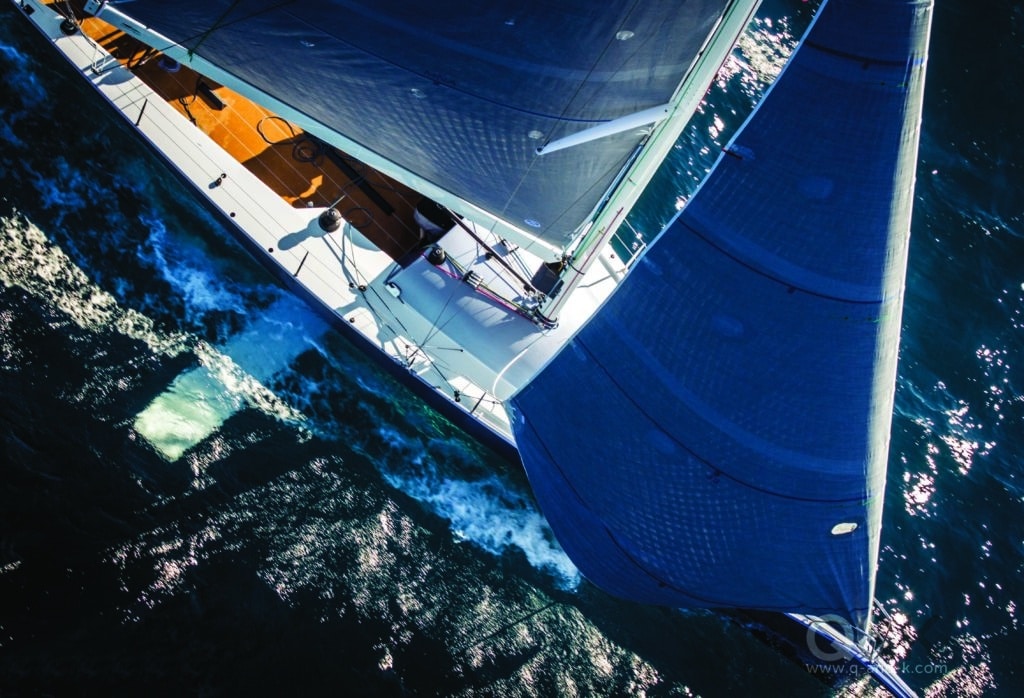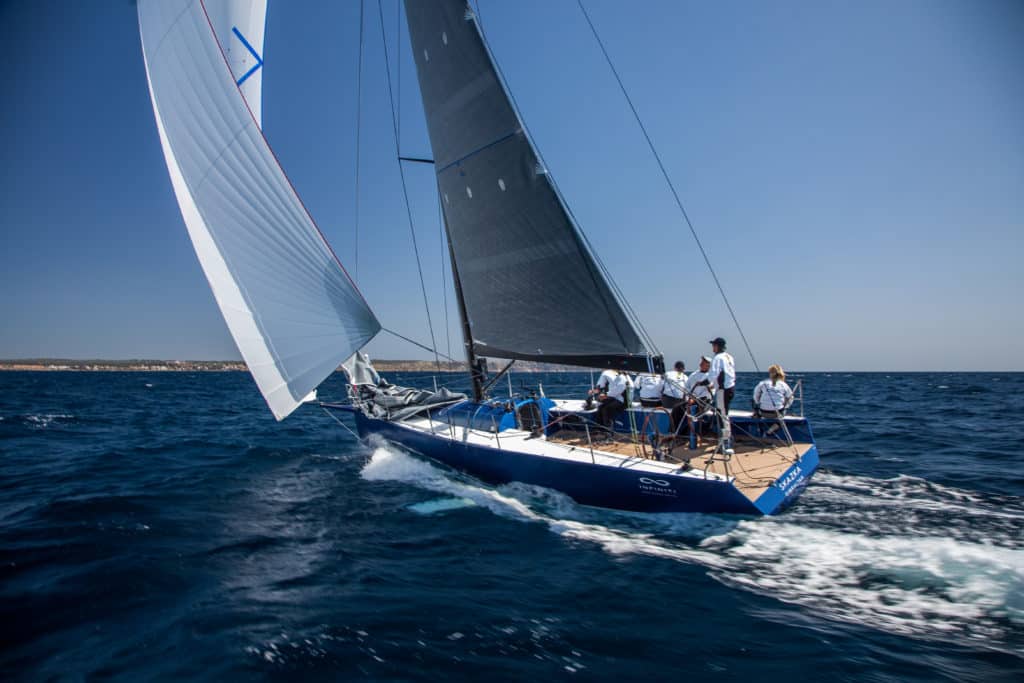
If a designer wanted to create a faster monohull, options were once limited to righting moment, increasing form stability, stripping weight or increasing sail area. And while canting keels and water ballast produce exceptionally fast steeds, such vessels are complex and mechanically tender. Hugh Welbourn’s Dynamic Stability Systems now provide a more practical alternative.
Boats with DSS use either two independent foils or a single carbon-fiber foil that can be extended athwartships — port and starboard — through a midship foil trunk via powered rollers. The horizontal foil provides increasing amounts of vertical lift and stability as the boat accelerates. These foils do not have adjustable flaps on their trailing edges, thus presenting an unchanging foil profile to the water. Users can laterally deploy or retract foil surface area for added lift and stability as the boat accelerates or as conditions demand, but they don’t need to trim or articulate the foil’s profile shape via controls.
Gordon Kay, the founder of Infiniti Yachts and Welbourn’s partner in founding DSS, says the system can be retrofitted on an existing boat or built into a new yacht’s design. Examples of the latter include Infiniti Yachts’ line of raceboats, including the new Welbourn-designed Infiniti 46 and the Farr-designed Infiniti 53.
While the IMOCA 60 class is embracing horizontal foils, it’s important to understand the class rules before thinking of IMOCA 60s as a DSS performance metric. Those rules stipulate that each IMOCA 60 can carry a total of just five underwater appendages, and while a DSS can be fitted as a single foil, IMOCA still counts this as two appendages. Moreover, since the decision to adopt horizontal foils came late in the 2016 Vendée Globe design cycle, all of the new-generation IMOCA 60s were designed around canting keels, with horizontal foils incorporated as retrofits that were intended to reduce lateral slip while also generating vertical lift. Because of this, designers created independent L-shaped daggerboards, dubbed DSS L-foils.

“The IMOCA class has problems that you wouldn’t have in other boats, and because of this, [their foils] aren’t as effective as they could be,” says Kay. To unlock DSS’s true potential requires stepping away from appendage-limiting rules and designing the hull around DSS. Here’s where things get interesting: While some yachts require extra beam (form stability) and extra volume in the bow, a DSS-designed boat can be narrower and lighter, with finer bow sections. If you think this sounds reminiscent of the Reichel/Pugh boats of the mid-2000s — including the all-conquering Wild Oats XI — you’re correct, especially given that Wild Oats XI, which was originally built in 2005 (and heavily optimized, ex post facto), handily beat Comanche, the new-generation VPLP/Verdier-designed supermaxi launched in late 2014, using a DSS foil in the 2014 Sydney Hobart Race.
“Comanche is an impressive bit of engineering, but she’s a bit last-century,” says Kay. “With a wide boat, the trick is to sail with big heel angles to get the boat out of the water.” But as every Opti sailor knows, a rig is far more efficient when it’s sailed upright. Kay says Comanche power-reaches at heeling angles of 25 degrees, while a DSS boat power-reaches at heeling angles of 7 to 12 degrees. Because DSS foils provide significant lift, a designer can spec a lighter-weight keel bulb, bolstering light-air performance, which has already been boosted by having a low-drag hull form. “The gains are all over the boat, and they keep magnifying [with speed],” says Kay. Gains include raw boatspeed, stability and ride comfort, as DSS-equipped boats pitch and slam less than their canting- or fixed-keel rivals. This last point theoretically enables a more stable flow over the sail plan while also delivering a more seakindly ride.
Ken Read, Comanche’s skipper, disagrees. “Every boat in the world would power-reach at 25-plus degrees of heel if it could. The harder you push without stalling the rudder, the faster you go. We can do this because of the steering system, and the balance of the leeward rudder doing all the work allows us to push the boat hard without losing flow to the rudders,” says Read. “Comanche’s design team looked into DSS as well as a broad array of ‘new’ systems to help reduce displacement and increase righting moment, and this is where we landed.”
While DSS foils for displacement keelboats are designed to increase stability and righting moment, they aren’t designed to fly the boat. That said, the scowlike Quant 23 was designed around twin curved daggerboards that provide both stability and vertical lift, allowing the boat to foil.
The owner of the first Quant 23 is a 60-year-old club racer, and his equally youthful crew is comprised of solid Corinthian-level sailors. “DSS gives you a lot more options as a sailor,” says Kay, who explains that a DSS foil can be extended laterally at different increments to reduce drag. “It provides a whole new set of gears and gives you a much wider range for your sails.”
After a decade of test-sailing the DSS, Kay is confident the technology can make the crossover to Corinthian raceboats and, soon, the performance cruising market.









